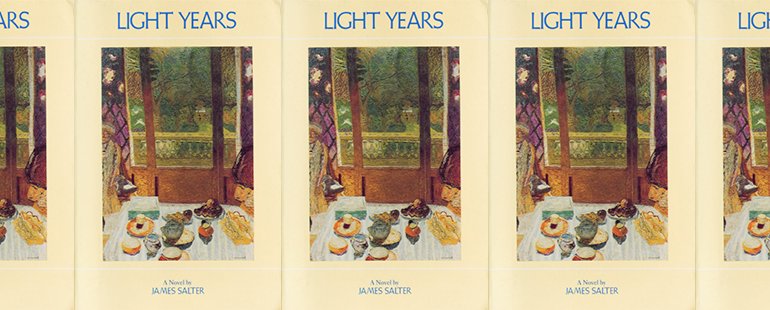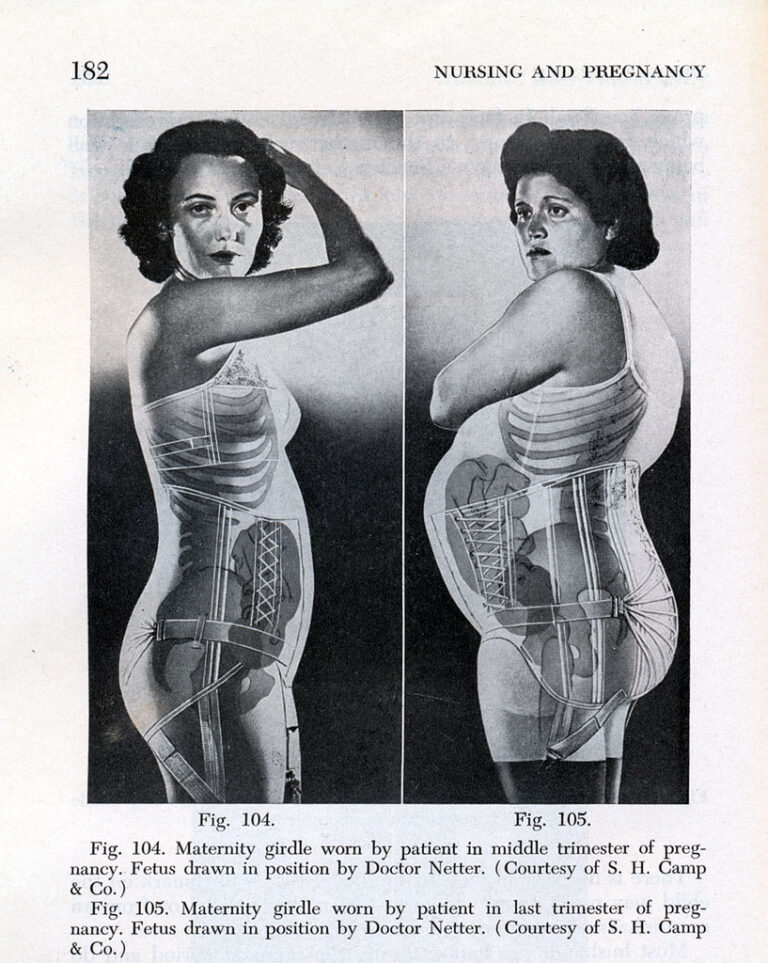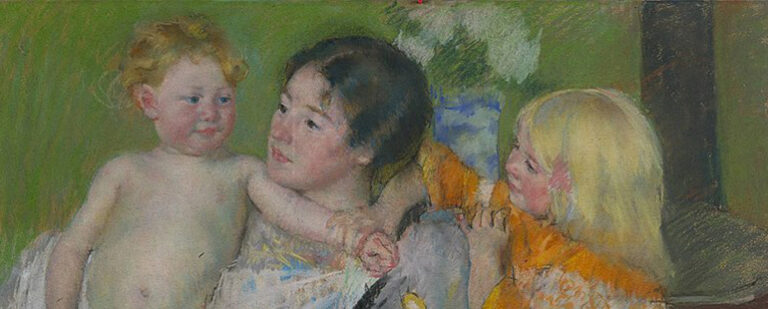Beauty in the Ordinary

There is deep breathing and the seriousness of living things at the heart of James Salter’s prose, as if his words were made of same matter as the world they conjure up, reproving those who, like many of his characters, believe that the true things, the complicated things, the painful things belong to the realm of the ineffable. The almost incantatory rhythms of his language have been called elegant and ornate, decadent, exultant, and, in an infamous 1975 New York Times review of what is perhaps his best novel, Light Years (1975), the “mandarin” medium of an “overwritten, chi-chi, and rather silly novel.” It is for the luminosity of his language, however, that one reads James Salter, since in his novels style is a form of truth, or at least one of the more direct means of apprehending truths. Salter’s characters are forever in search of some version of the truth, his narrators fumble about trying to elucidate it, and his plots fruitlessly promise it over and over again, but it is in the rhythms of his descriptive passages, with their curious resemblance to film stills (in the sixties Salter was a briefly a screenwriter and film producer) or, occasionally, to still life paintings, that one at last gets a sense that Salter has said something important, conveying a sense of the world as it really is, perhaps despite his own intentions.
Nowhere is this clearer than in Light Years, the story of Nedra and Vladimir Berland, a wealthy, married couple in their late twenties living together with their two young daughters, Franca and Danny, in a ramshackle Victorian mansion overlooking the Hudson River. At first, the couple seems both immortal and immemorial. The novel opens in 1958, when Nedra and Viri already appear ageless and comfortably middle-aged—the divulgement of their actual ages is meant to elicit disbelief—and give the impression of having lived together for many years. “I’ve done everything,” the twenty-eight-year-old Nedra affirms in the opening pages of the novel, “a wide smile over her wineglass.” Vladimir—Viri—her husband, who is not much older, similarly seems to have been commuting to his Manhattan office for decades. He is already a modestly successful architect. He has clients, a reputation, and draughtsmen under his command. He is Jewish, from a family of Russian emigres, his Americanized pet name with its hint of healthy manliness made ironic by the already noticeable “weariness in his features, the intelligent features everyone envied, his hair dry, his clothes oddly threadbare . . . his breath faintly bad like the breath of an uncle who is no longer well. He was small. He had soft hands and no sense of money, almost none at all . . . He was innocent of any real instinct.”
And yet, despite Nedra’s world-weariness and Viri’s faded appearance, both Nedra and Viri are young enough to still be trying to discover what they might do with their lives. Despite his success, Viri dreams of becoming truly “famous.” Nedra, who hails from Altoona, Pennsylvania, “her source, though far from it for years, the vacant, illiterate country,” grapples with the question of purpose. “Her dreams still cling to her, adorn her; she is confident, composed, she is related to long-necked creatures, ruminants, abandoned saints.” Though they come from very different backgrounds and though they have a very different understanding of what a meaningful life might entail, in the beginning both Nedra and Viri, however, share a similar deep belief in the fundamental importance of comfort, pleasure, wealth, and raising happy children. Together, they have fashioned for themselves a life of upper-middle-class luxury, which neither is willing to give up. In fact, who they are cannot be understood apart from this life. “It is through the smoke and conversation of many dinners that one sees [Nedra],” the narrator remarks, at one point, “country dinners, dinners at the Russian Tea Room, the Café Chauveron with Viri’s clients, the St. Regis, the Minotaur.” Who Nedra is is bound up with her social obligations, her entertaining, the places in which she dines.
The great failure of Nedra and Viri’s joint life, as we are given to understand it, is its lightness—that it revolves around such pleasures, or what the narrator calls “appetites.” Nedra might want her independence, Viri might want creative success, but, in the meantime, “life is weather. Life is meals. Lunches on a blue checked cloth on which salt has spilled. The smell of tobacco. Brie, yellow apples, wood-handled knives. It is trips to the city, daily trips.” The pair entertain, they summer in the Hamptons, they own the requisite pony and cattle dog, they throw lavish parties for their children, they buy the right wine and mix the right cocktails, they attend the opera and theater, they cultivate intelligent and funny friends, and they discretely take lovers. In all of this, they are the envy of those who come to know them. “Their life is mysterious, it is like a forest; from far off it seems a unity, it can be comprehended, described, but closer it begins to separate, to break into light and shadow, the density blinds one. Within there is no form, only prodigious detail that reaches everywhere: exotic sounds, spills of sunlight, foliage, fallen trees, small beasts that flee at the sound of a twig-snap, insects, silence, flowers.” The story Salter will go on to tell is in part about what happens when the “prodigious detail” centered on pleasure can no longer sustain the “whole” of marriage, whose meaning—at least in this case—amounts to such details. It is about fruitless dreams and, finally, about old age, when, as Salter demonstrates, illumination comes at a great, perhaps unreasonable, price.
Light Years is sometimes spoken of as being a fundamentally flawed work, or as being a product of its time. This is because Salter relies on heavy-handed characterization as a guiding principle for portraying “the stupidity of this kind of life, the boredom, the arguments.” The method fails most obviously and miserably in his descriptions of women, all of whom become types. Salter’s women are all mysterious, cool, unapproachable, and finally unknowable. Nedra is “careful, hard to approach. Her life is concealed.” She has a face “that electrifies – that sudden, exploding smile—and yet, she somehow gives nothing.” She is like “a woman from a far country, already part legend, unknown.” One of Viri’s friends “like[s] what Nedra represents . . . . A certain courage, a kind of life . . . . A woman’s realm.” If Nedra represents one type of unknowable married woman, however, Lia, her opposite, with whom Viri becomes romantically involved later in the story, represents another. “She was a woman of great strength. She was slight, but she possessed will and also terrifying loneliness . . . . She was like a refugee, a woman who had seen armies pass, destruction, absurdity. She had survived all this, she had come through alive.” Nedra and Viri’s women friends are mysterious types, as well. The painter Marcel Maas’s wife, Eve, for example, who seems ancient despite being only thirty-nine, is likened to the house in which she waits for her husband, “alone in the country.” Like Nedra, “her eyes still clear, her breath sweet, [s]ilence surrounded her, the air, the hush of grass. She had no tasks.” Even Nedra and Viri’s daughters are cryptic types. Viri looks at his younger daughter and observes that her face “was not as fine as Franca’s. It was more human, not so mysterious; it might have belonged to a serving girl or a young nurse.” The last statement borders on the misogynist, and it is not the only one.
Salter’s men do not fare much better, though, even if they seem more knowable. Some are bon vivants and artists, others disappointed immigrants, callow youths, middle-aged New York intellectuals, lawyers, investors, and dealers, but they are all types in their own way. They each represent a certain approach to life. “Nedra’s father a salesman, [is] a man from small towns, his cough yellow, the Camel cigarettes always near his hand.” Jivan, Nedra’s first lover, “was short. He was thin, like the boys one sees loitering in plazas of Mexico and countries further south. He was one of those boys, but with manners, with newly bought clothes.” Robert Chaptelle, the couple’s playwright acquaintance, is a neurotic European intellectual similarly old before his time, a Gustave von Aschenbach after Thomas Mann: he “was thirty. His hair was thinning, his lips an unnatural red. Beneath his eyes lay the faint blue of illness, asthma among other things, the asthma of Proust. And intellectual face, the bone gleaming in it.” Of Viri, we are told that “he earned money, he was liked by his clients, he could draw beautifully,” and “he was urbane . . . he seemed the age one longs to be, the age of accomplishments, of acceptance, the age we never achieve.”
The flaws of facile characterization—what sometimes reads like the novel’s casual misogyny, xenophobia, and racism—are sometimes taken to be the product of Salter’s own poorly-concealed views, and they may very well be, though it is perhaps likelier they are the product of risky narrative design. One can attribute them to the male types that often make them—“She was terrific, Eve; that was what [Arnaud] said . . . . The kind of woman seen on the arm of a boxing champion, the kind who is not married”—or who prompt the narrator’s commentary. This narrator, the “I” of the novel, is an unreliable one, though it is difficult to know just how so. His or her presence is made clear only five or six times in the three-hundred-page book and is easily overlooked. Indeed, on a quick reading, the novel seems to alternate between third-person omniscient narration, direct dialogue, and free indirect discourse. The novel’s “I,” however, is there. The narrator never reveals themselves, and the reader never discovers who they are. When the “I” states that Nedra and Viri “were divorced in the fall. I wish it could have been otherwise,” we wonder why the “I” wishes it or how they know, for example, that “the clarity of those autumn days affected them both.” The “I” seems almost a stand-in for the author, its pronouncements and roving eye all-seeing and all-knowing—though, of course, one is always left wondering whether the narrative is a rouse, whether we are being told a story of types because this is the kind of amusing story Nedra, Viri, and their friends tell about each other, whether, indeed, some of what we are told is imagined or made up because the story is in fact narrated by someone they know. The only clue comes on the second page of the book when the narrator looks back at the Berlands’ house: “the gravel paths are dissolving; birds nest in the sheds. We strolled in the garden, eating the small, bitter apples.” Does the “we” refer to the narrator and reader? Does it refer to the Berlands and one of their friends? To their daughters? Who is dividing up the world into people of one sort or another?
Salter wants us to think about the question of perspective—he is intent upon it—but because we are left in the dark, because he forgoes the option of finally disclosing the identity of his narrator, he limits (or perhaps expands) the possibility of truth to that broader form that characterization can take: to sketches of moments that make up a world. It is as if Salter is arguing that, if we can never know anything for certain about Nedra and Viri’s life together, or why it might take the shape it does, we can at least know something about lives like theirs and their friends’s. It is when he is paying attention to Nedra and Viri’s world that the narrator speaks clearly. Moments stand apart, made rapturous in language, meaning nothing except that they exist. He points: “A canopy of music in the room, a tray with three cups, white cubes of sugar in a bowl, many books”; “the autumn sunlight . . . The trees . . . calm, sentient. The sky . . . endlessly deep, teeming with light”; “summer. The foliage is thick. The leaves shimmer everywhere, like scales. In the morning, aroma of coffee, the witness of sunlight across the floor. The sound of Franca upstairs”; “Christmas Eve . . . cold and windy. The darkness came early, the cars were in endless lines in every road. Viri arrived late with the final packages, brandy, Nedra’s cigars. The snow on the ground lit everything. Music was playing; Hadji ran barking from room to room.”
In such moments, the Berlands “pass their life together, in a compact that will never end. They go to the circus, to stores, the market shed in Amagansett with its laden shelves and fruits, to picnics, pageants, concerts in wooden churches among the trees. They enter Philharmonic Hall. The audience is hushed. They are seated, the programs in their laps.” Each moment stands apart, lavishly attended to, lapidary. To what do they add up? It is a useless question. At one point, Nedra names the family dog “Hadji.” “What does it mean?” Viri asks. Instead of explaining that a haji is a Muslim believer who has completed the required hajj or pilgrimage to the holy city of Mecca, Nedra responds, “What does anything mean?” For Nedra, the hajj is conceptually no more significant than “when the bottles of wine were finished. The color of their emptiness was the color in cathedral naves,” or than the pony with its saintly name of “Ursula.” The moments are tender or sad, grotesque, amusing, but similarly lie beyond interpretation, absurdly juxtaposed. They are whims, pleasures, obligations—they mean nothing more than life.
Though, in one sense, everything in Nedra and Viri’s world could be said to revolve around the shared personal mythology that the pair call marriage, this mythology is both unknowable and finally incapable of withstanding the pressure of the outside world. By the nineteen-sixties, the light dims, “night falls. The cold lies in the fields. The grass turns to stone. In bed, [Viri] lay like a man in prison, dreaming of life.” By the nineteen-seventies, Nedra sighs that she is “in the grocery store of life. We sit here at night, we eat, we pay bills. I want to go to Europe.” Salter seems interested in the idea of perspective, or that depending on who exactly is narrating the events, the collapse of the shared mythology of marriage might itself be a myth, part of someone else’s explanation of how the world works and why it might fall apart. This is undoubtedly true, and the careful reader is forced to agree with the narrator that, like the Berlands, “we live untruth amid evidence of untruth.” Salter likewise seems interested in the modernist idea that, on some level, this personal mythology—real or not—is subject to the passage of time. As in Virginia Woolf’s The Years and To the Lighthouse, to which Salter’s novel alludes, time passes, what is important changes, and when the Berlands at last do what they must, they are still liable to fail to live up to their notion of what makes a good life.
Light Years, however, is worth reading not for any of these reasons, narratively interesting though they may be, but because of the infinite tenderness Salter lavishes on the unremarkable and unredeemable moments to which he refuses the possibility of meaning anything. Salter instructs in attention—the kind that, had the Berlands possessed it, might have allowed them to make more of each other and of their marriage than the idea that happiness is the chance of getting what one wants, or that “the only thing [to be] afraid of are the words ‘ordinary life’.” He and his mysterious narrator store up and linger over the wealth of the seemingly unimportant, unlike the Berlands, who believe, as they shop for the winter holidays, for example, in “nothing in abundance, nothing stored up.” One reads Salter for his insistence on the beauty of the abundantly ordinary, like “the first snows [that] fell. It was like midwinter, the windows took on a chill. One could lie in bed in the darkness and watch the coming of light.”


